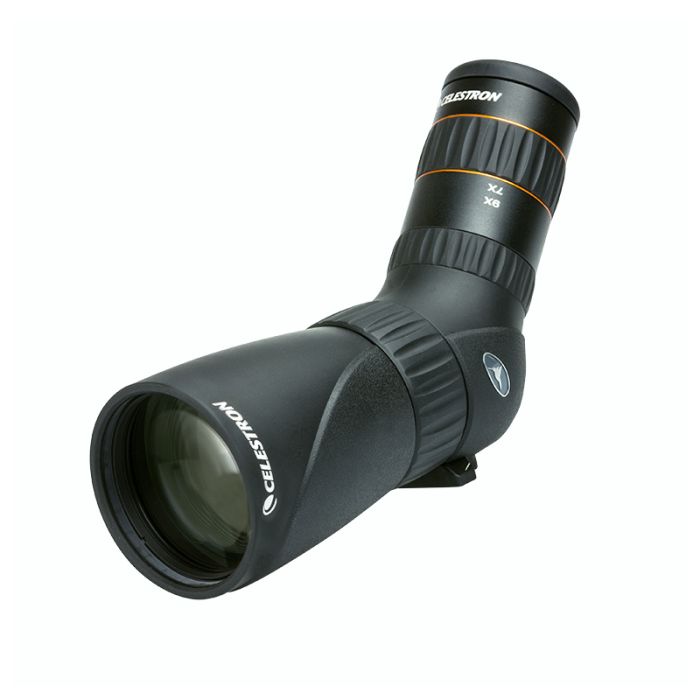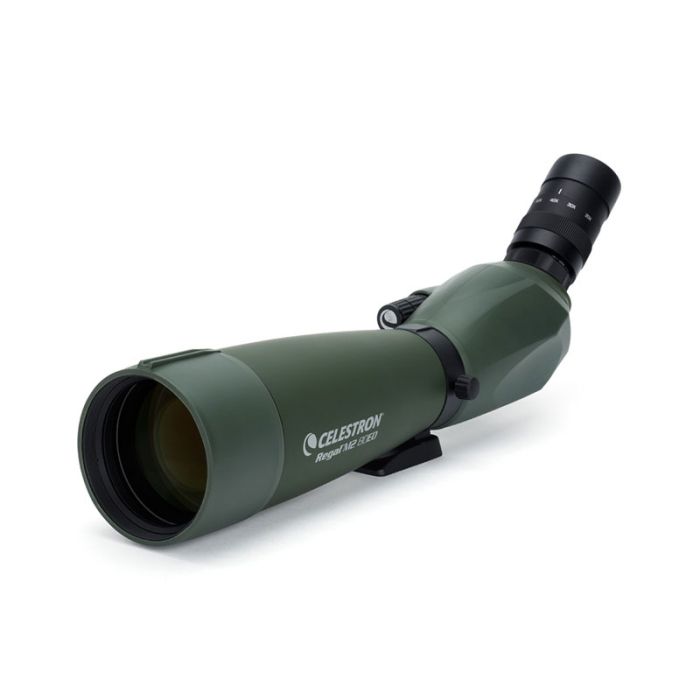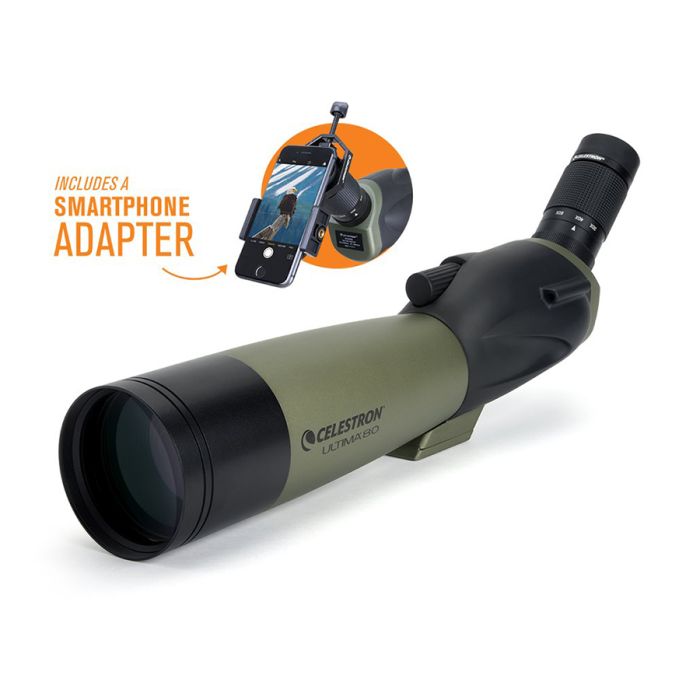
Combining the sophisticated features of a Newtonian reflector with the simplicity of a spotting scope, the Celestron StarSense Explorer 8" Dobsonian has more magnification than binoculars. This small, light, portable telescope is an eight-inch parabolic primary reflector that offers impressive night sky views by capturing clear photographs of celestial objects.
Highlighted Products
Featured Product 1
Featuring extra dispersion glass for color and clarity, the Celestron Hummingbird 9-27x56 is a small, waterproof spotting scope perfect for long-distance travel or backyard observations.
Featured Product 2
With its ED objective lens, XLT coatings, magnesium alloy housing, dual focus, rotating tripod mount, 20-60x zoom eyepiece, and adjustable magnification, the Celestron Regal M2 80 ED Spotting Scope is a versatile tool for any landscaper or wildlife photographer.
Featured Product 3
Conversely, the Celestron Ultima 80-45º Angled Spotting Scope offers outdoor enthusiasts a dependable choice for high-magnitude observations with simplicity and comfort since it blends lightweight durability with user-friendly features.
More About This Category
Spotting scopes are flexible and helpful instruments for terrestrial and astronomical observations. High Point Scientific provides a wide range of these small optical equipment, allowing you to carry about a portable telescope. Our spotting scopes meet a range of needs and tastes regardless of your level of birdwatching, hunting, or appreciation of amazing terrestrial views.
Although it can also be used to view astronomical bodies, a spotting scope is a small terrestrial telescope. Because it has a higher magnification power in sharp focus, spotting scopes allow one to view far-off objects instead of binoculars. Usually, spotting scopes' eyepieces are straight or angled, which is convenient when viewing from numerous angles.
Though one can also view the sky using a spotting scope, it is a small telescope for viewing objects on the ground of Earth. These days, spotting scopes provide more magnification and clarity than binoculars. Hence, they are excellent for observing far-off things. Their simplicity of usage and mobility help to define them. Usually having a straight or angled eyepiece, a spotting scope lets one view from different angles and provides comfort levels.
Why Choose a Spotting Scope?
1. Portability: A spotter's portability is among its main benefits. Unlike giant telescopes, spotting scopes are lightweight and tiny, enabling easy travel to various viewing sites—from a remote birdwatching site to a dark-sky site for stargazing.
2. Versatility: Spotting scopes can be used for various pursuits. Nature lovers can get a closer view of landscapes and animals. Astronomers can get a closer view of celestial objects without the need for a giant, heavier telescope.
3. High Magnification: Spotting scopes often have better magnitudes than binoculars, enabling thorough views of far-off things. This ability benefits both terrestrial and astronomical gazing.
Maintaining Your Spotting Scope
The lifetime and best performance of your spotting scope depend on regular maintenance. Here are some fundamental pointers:
1. Regular Cleaning: Maintaining image quality from spotting scope lenses depends on regular cleaning. Remove loose particles with a gentle brush or compressed air; clean with a microfiber cloth and lens cleaning solution. Keeping the scope dry and applying lens covers and a protective case will help to guard against moisture.
2. Check Alignment: Verify the optical alignment, mainly if you observe any problems with visual clarity or sharpness. Misalignment might compromise performance and call for expert correction.
3. Store Properly: Keeping your spotting scope cold and dry will help secure it when not in use. Avoid direct sunlight or excessively high temperatures, which could damage the internal components.
Frequently Asked Questions
- What is the difference between a spotting scope and a telescope?
Though usually smaller and more portable than telescopes, spotting scopes are made for terrestrial and celestial studies. Conversely, telescopes are often more giant, provide more magnification, and are utilized for more exact astronomical observations. While telescopes are selected for superior optical capability, spotting scopes offer portability and performance. - Can a spotting scope be used for astrophotography?
Although simple astrophotography can be accomplished with spotting scopes, they are usually less fit for this usage than specialist telescopes. More sophisticated astrophotography is advised using telescopes with particular characteristics, including excellent optical quality and considerable focal lengths. However, spotting scopes, such as camera adapters, may record photographs of the moon and planets with the correct attachments. - What should I look for when choosing a spotting scope?
Choose a spotting scope based on the field of view, magnification power, objective lens diameter, and kind of eyepiece, straight or angled. For astronomical purposes, choose a scope with greater magnification and aperture. Significant factors for terrestrial observations include mobility and simplicity of usage. Check also for qualities like durability and waterproofing for several environmental settings. - How can I improve the performance of my spotting scope?
To enhance performance, ensure your spotting scope is well-maintained and adequately calibrated. Use high-quality accessories and mounts for stability. Choose a location with minimal light pollution and atmospheric distortion for optimal viewing conditions. Regularly check and clean the optical elements to ensure clear and sharp images.
We will review the best spotting scopes available, considering their features and how they could enhance your astronomy trips. Watch this area for our top recommendations.
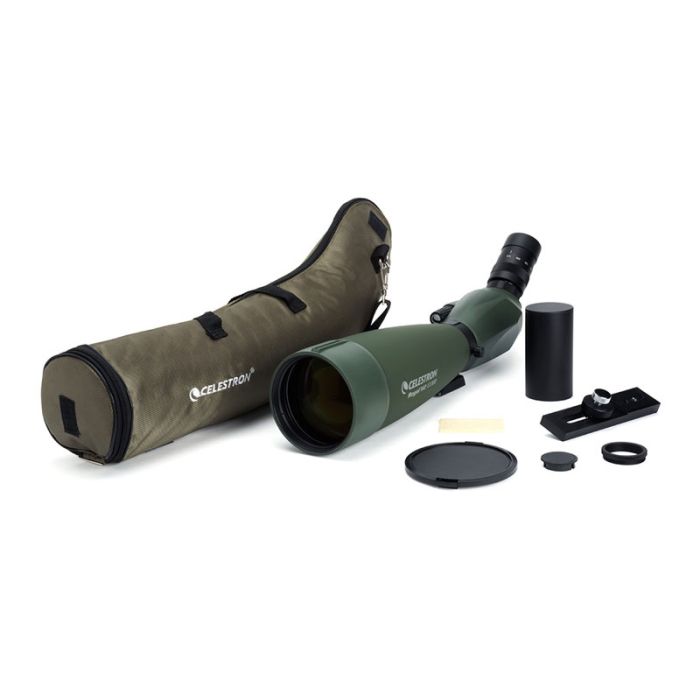
With an ED objective lens, XLT coatings, magnesium alloy housing, dual focus, a rotating tripod mount, and a 22–67x zoom eyepiece, the top-performance spotting scope series Celestron Regal M2 100 ED Spotting Scope offers complex capabilities. Designed for long-distance gazing, leisure astronomical observation, and bird and wildlife viewing, the spotting scope Twice faster topic focus is made possible by the dual focus process. It is nitrogen-purged and waterproof to stop fogging. The spotting scope fits many astronomical eyepieces and is designed to provide excellent images for bird viewing, animal observation, long-distance gazing, and recreational astronomy observing. It is fresh green and has a T-ring and Adapter for essential mounting.
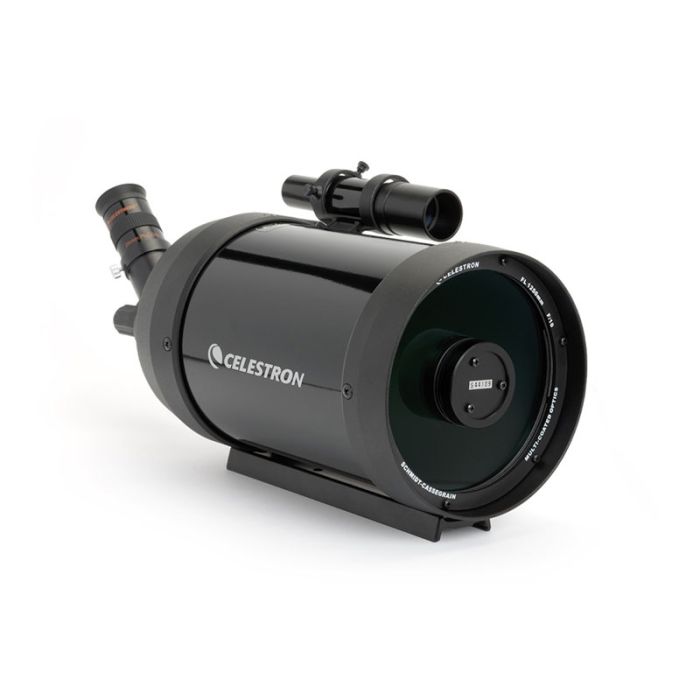
A flexible optical system with a 127 mm aperture and 1250 mm focal length f/10 Schmidt-Cassegrain optics, the Celestron C5 Spotting Scope NASA selected for Space Shuttle operations because of its optical brilliance. It has a water-resistant, soft-sided casing, an 8 x 20 erect picture finderscope, a 25 mm eyepiece, and a 45° straight image diagonal. Offering four times more light-gathering capability than a 60 mm spotting scope and two times more than an 80 mm scope, the C5's 5" aperture lets it surpass smaller aperture spotting scopes. Additionally, it is entirely camera-adaptable and used as an astronomical telescope, allowing professional-quality images with the proper T-Adapter and T-Ring for your 35mm SLR or DSLR camera. The C5 boasts Celestron's limited lifetime warranty and a handy soft-sided carrying bag.
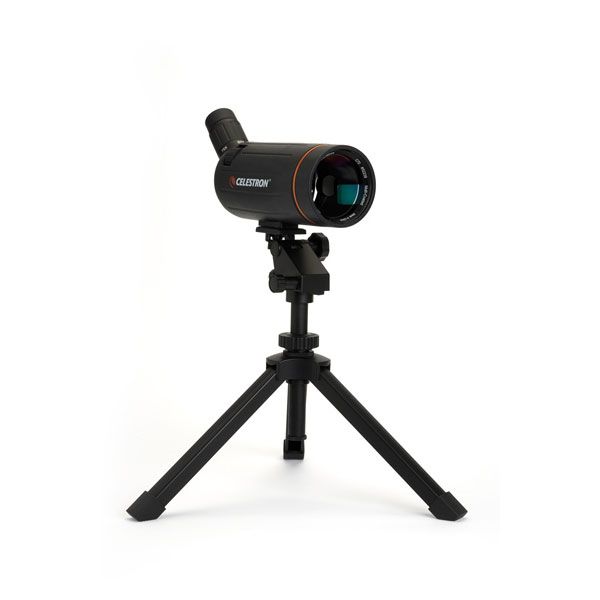
Comprising a Maksutov optical design, the Celestron C70 Mini Mak Angled Spotting Scope is small and flexible. It is appropriate for astronomical and terrestrial applications. Its 45° zoom eyepiece, a tabletop tripod with built-in slow motion controls, 75x zoom eyepiece, and plush carrying box all point to With a 70 mm aperture, a 750 mm focal length, and a 25–75x magnification, the scope has Its angular field of view is 1.3 to 0.73 degrees; its linear field of view is 68 feet; and its eye relief is 22 mm.
